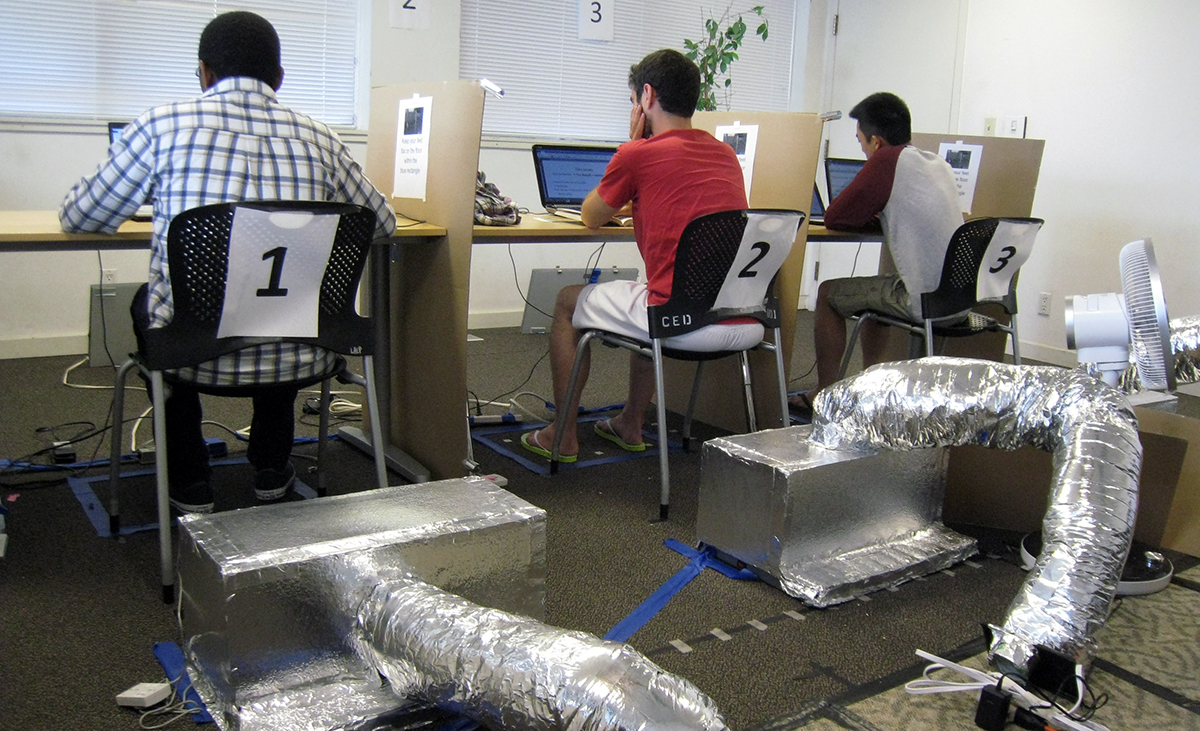An important goal at the Center for the Built Environment is to provide tools to assist industry professionals to create energy efficient and comfortable buildings. To this end, in 2013 we first launched the online CBE Thermal Comfort Tool as a way to help practitioners predict thermal comfort in buildings, according to the primary industry standard, ASHRAE Standard 55. CBE’s tool has been actively used, with as many as 6000 users per year, and it offers numerous capabilities, which we have expanded in the most recent version.
The comfort tool is suitable for evaluation of conventional building systems based on the predicted mean vote (PMV), and it can also predict the effect of increased air speeds, for example, when using fans for cooling. It also offers the adaptive comfort model that is relevant when predicting comfort in naturally conditioned spaces. In 2015, we added the SolarCal model for predicting the comfort impact of sunlight entering through windows. Recently we have added a number of updates, most notably, dynamic visualization of air movement and an ankle draft model.
New Air Movement Visualization
One of the recent enhancements is a new “operative temperature velocity chart,” a dynamic chart combining the predicted mean vote (PMV) and standard effective temperature (SET) models to better predict air movement cooling. In the new version, as users vary inputs — operative temperature, air speed, humidity, metabolic rate, and clothing level, etc. — both the comfort envelope and “target” shift, showing if conditions comply with the comfort standard. To use the new visualization, use the pulldown menu above the output chart, while using the PMV method.
Inclusion of an Ankle Draft Model
In buildings with displacement ventilation or underfloor air distribution, diffusers close to the floor create a concern with unwanted overcooling known as “ankle draft.” Historically, ankle draft modeling was based on research conducted on the head and neck. CBE’s research team wanted to improve how this modeling was done, to create more accurate predictions. We conducted numerous experiments in a controlled laboratory environment with 110 human subjects under a range of air speeds, temperatures, turbulence intensities, and clothing levels (as shown in the photo above). Statistical analysis of the subjects’ perceptions, with these varied different environmental conditions, led to the creation of a new ankle draft model. This model has been integrated into the CBE Thermal Comfort Tool, and it has been also adopted into the most recent version of ASHRAE Standard 55-2017 .
We would like to thank Dr. Toby Cheung for his work updating the online tool, and the rest of the CBE team who contributed to these updates. The full CBE Thermal Comfort Tool has been adopted by ASHRAE as the official embodiment of Standard 55. You can read more about the recent ankle draft risk studies in these publications:
Liu, S., Schiavon, S., Kabanshi, A., Nazaroff, W. (2016) Predicted percentage dissatisfied with ankle draft, Indoor Air Vol 27, Issue 4. https://doi.org/10.1111/ina.12364 (subscription required)
Schiavon, S., Rim, D., Pasut, W., Nazaroff, W. (2016) Sensation of draft at uncovered ankles for women exposed to displacement ventilation and underfloor air distribution systems, Building and Environment, Vol 96. http://dx.doi.org/10.1016/j.buildenv.2015.11.009 (subscription required)
Please try the CBE Thermal Comfort Tool and give us feedback.
Featured image shows test subjects in CBE’s controlled environmental test chamber.

